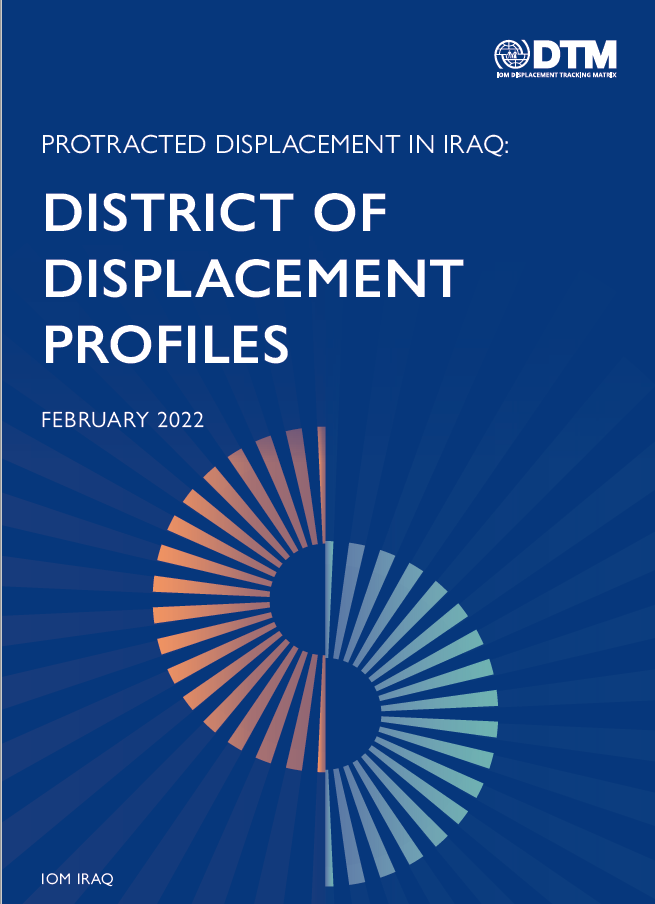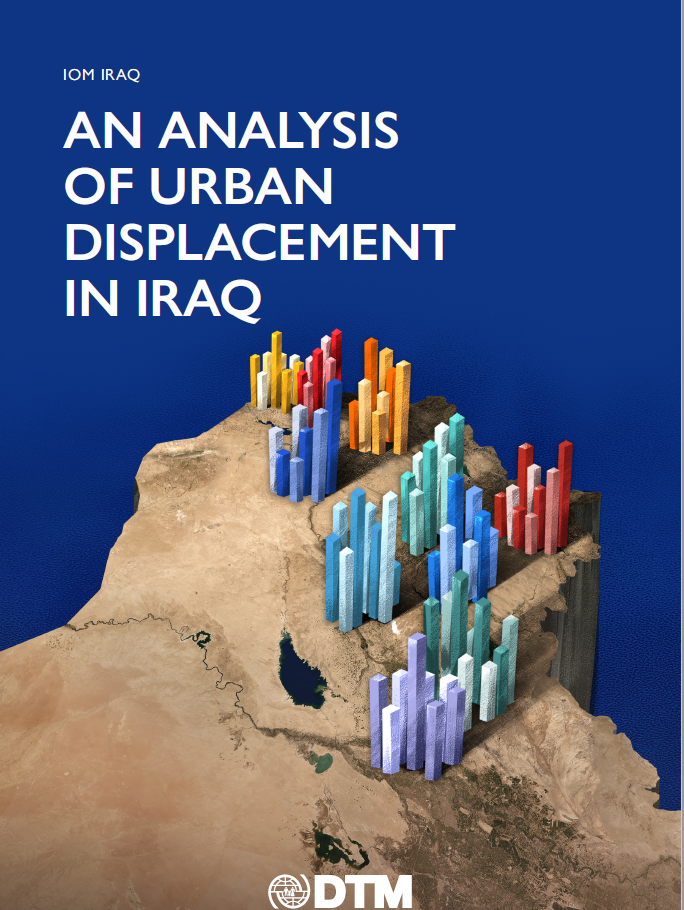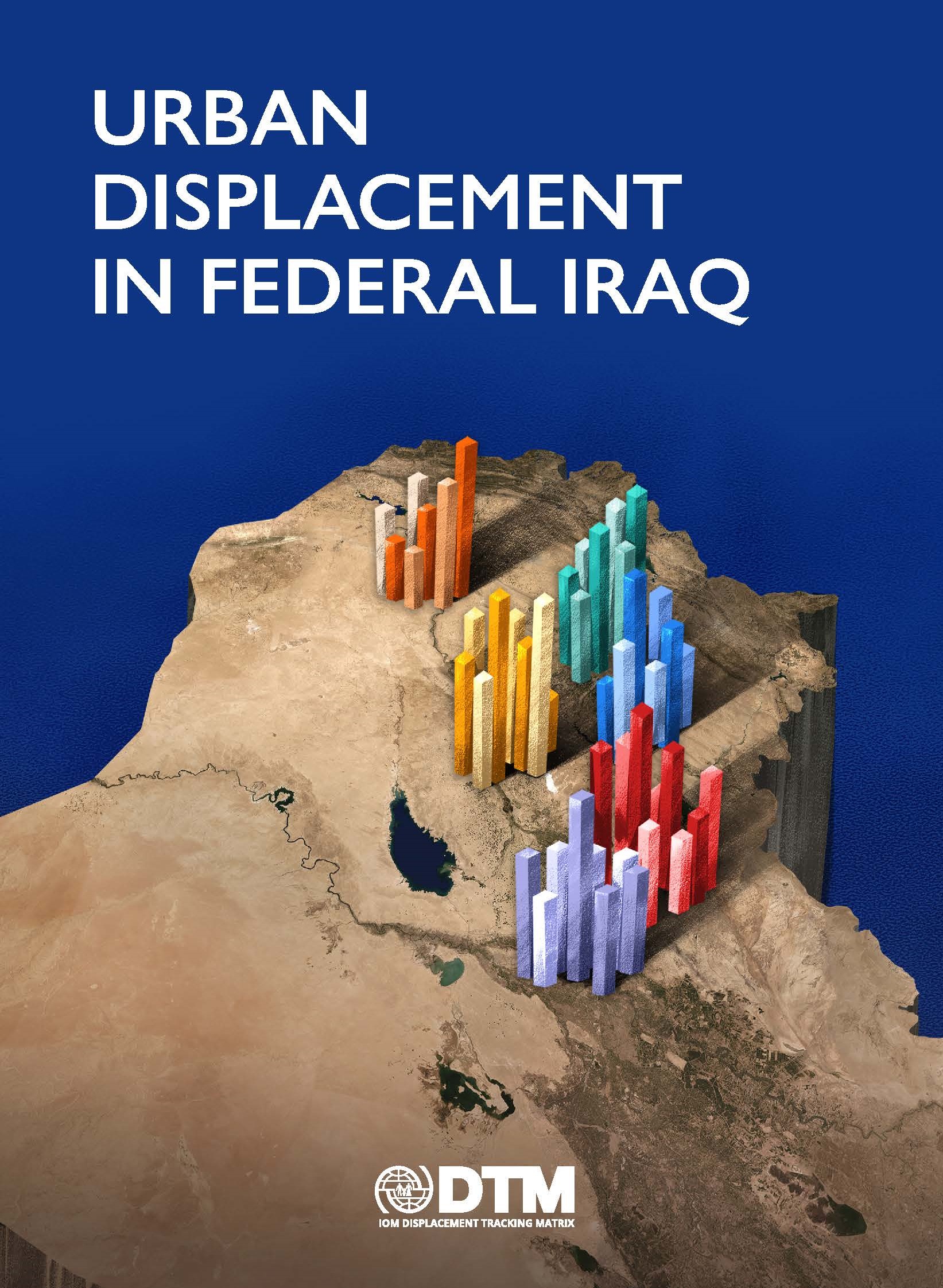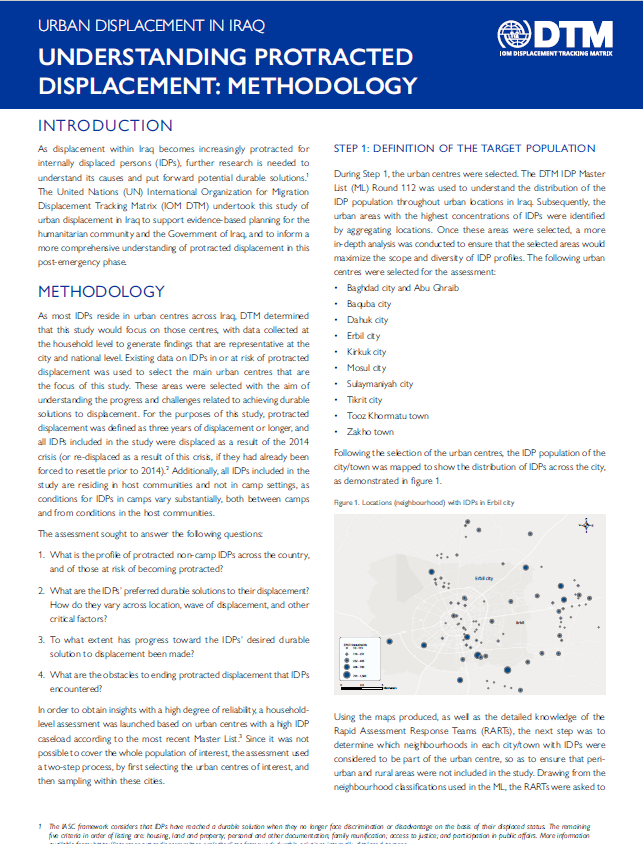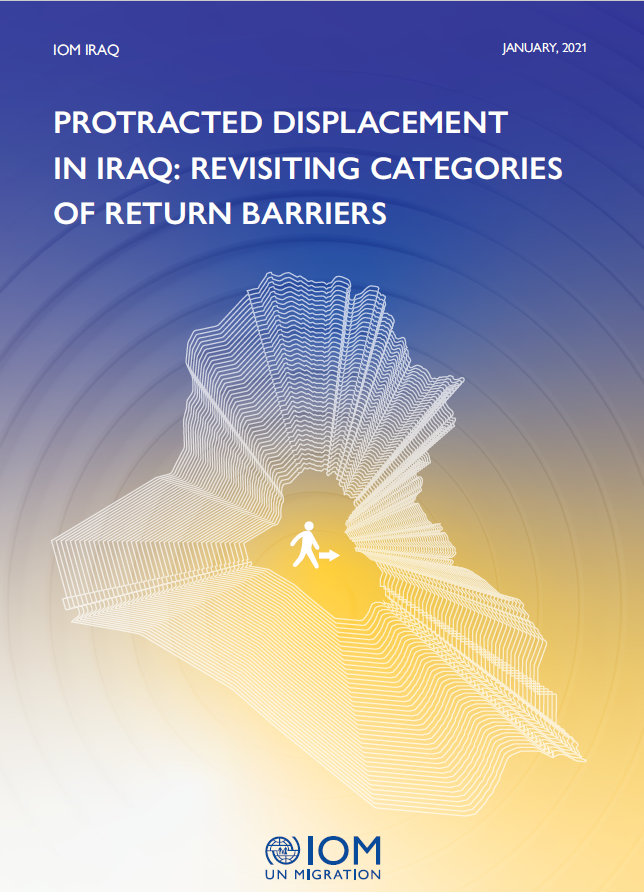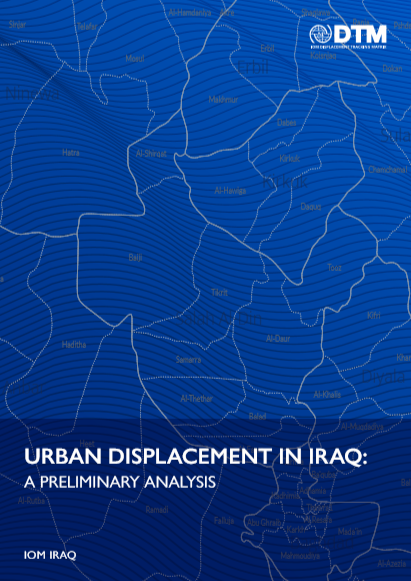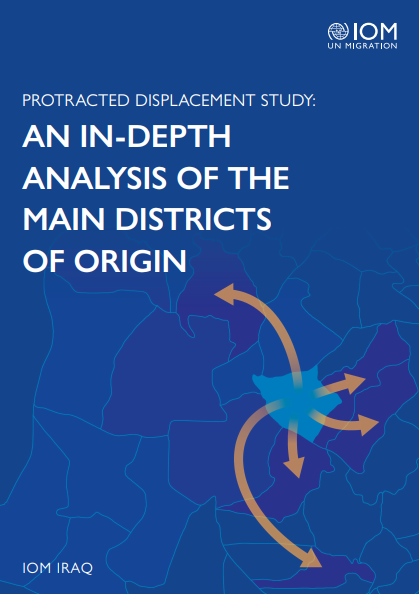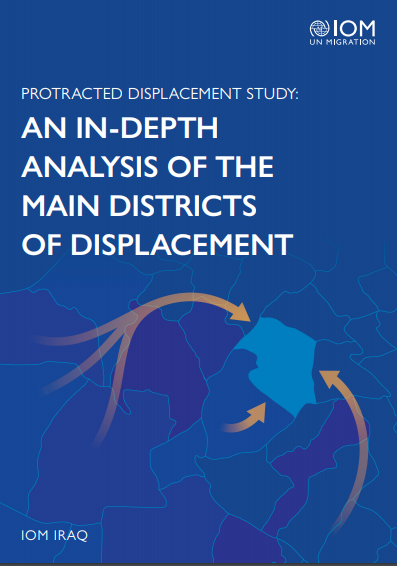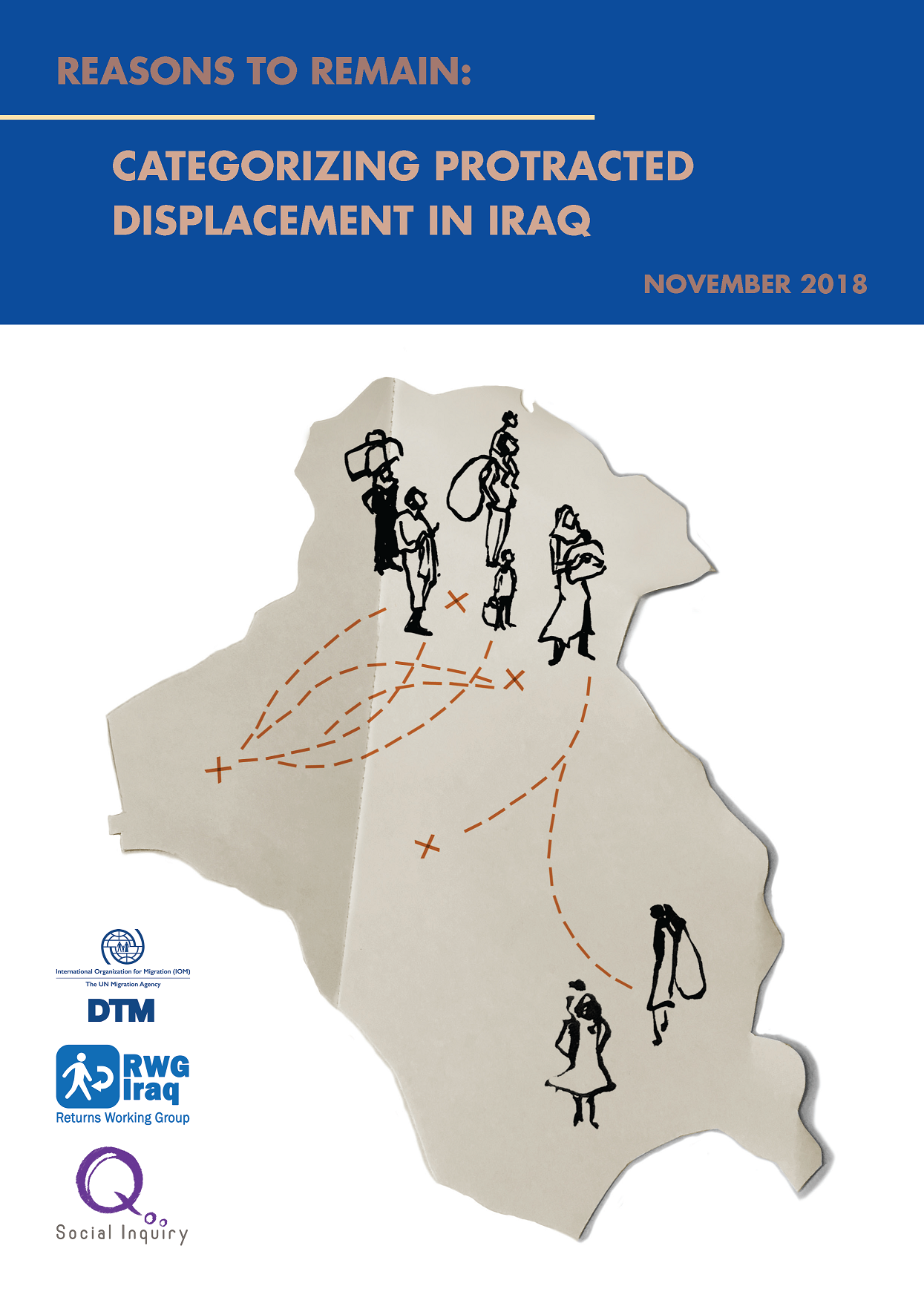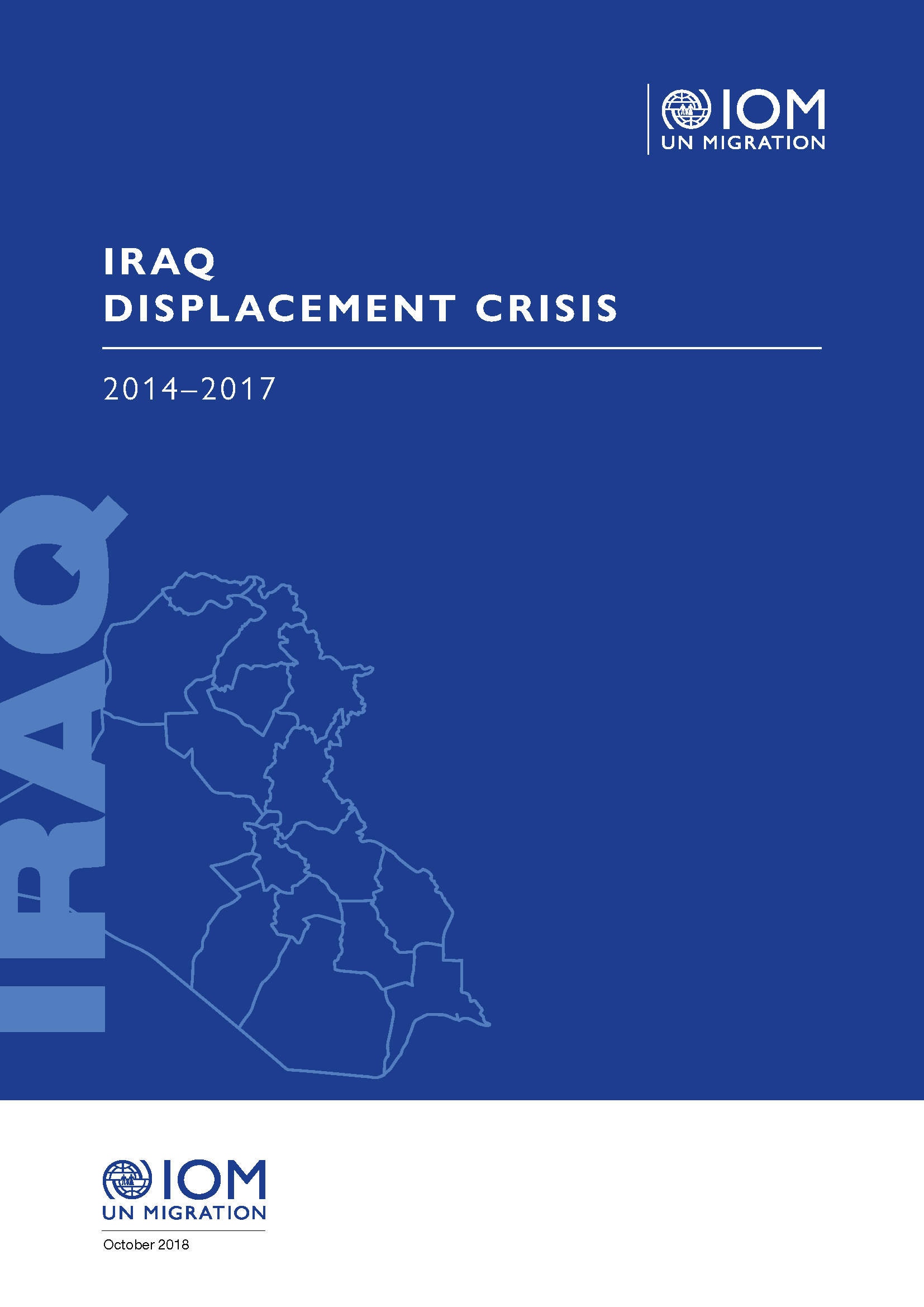DISTRICT OF DISPLACEMENT PROFILES
DISTRICT OF ORIGIN PROFILES
In January 2021, IOM produced an in-depth report on return barriers faced by IDPs, “Protracted Displacement in Iraq: Revisiting Categories of Return Barriers.” This report drew on data that had been collected since November 2018 in locations of displacement and return, and is centered on a categorization framework highlighting the different barriers that IDPs are likely to face in returning to their area of origin. However, the data included in this report is predominantly based on the issues that IDPs face (or are likely to face) in the locations where they are displaced. As such, a gap in updated information has remained relating to how conditions of IDPs vary according to the districts from which they originate – including factors affecting their prospects of returning, and the conditions faced by returnees who have back to these districts. To address this information gap, in August 2021, DTM developed this set of district profiles, which is based on an analysis of secondary data related to 17 of the main districts from which IDPs originate. The aim of this publication is to: 1) complement the categorization framework by providing information related to issues faced by IDPs originating from different districts, and 2) enable the comparison of conditions faced by IDPs originating from different districts as well as returnees who have arrived back to them.
AN ANALYSIS OF URBAN DISPLACEMENT IN IRAQ
The Urban Displacement in Iraq series aims to support evidence-based planning for the humanitarian community and the Government of Iraq, and to inform the response to protracted displacement. This report presents a comparative analysis of the characteristics of IDPs in protracted urban displacement and conditions across 10 cities. The report also analyses the drivers of urban displacement, including factors in the area of displacement, barriers to return in the primary areas of origin and other socio demographic factors that impact upon the realisation of the IDPs’ preferred durable solution.
URBAN DISPLACEMENT IN FEDERAL IRAQ
As displacement within Iraq becomes increasingly protracted for internally displaced persons (IDPs), further research is needed to understand its causes and put forward potential durable solutions. The United Nations (UN) International Organisation for Migration Displacement Tracking Matrix (IOM DTM) undertook this research project “Urban Displacement in Iraq” with the primary objective of supporting evidence-based planning for the humanitarian community and the government of Iraq, and to inform the response to protracted displacement in this post-emergency phase. This report will detail findings from urban centres within the Federal Iraq. An equivalent report is available below for urban centres assessed within the Kurdistan Region of Iraq (KRI).
URBAN DISPLACEMENT IN THE KURDISTAN REGION OF IRAQ
As displacement within Iraq becomes increasingly protracted for internally displaced persons (IDPs), further research is needed to understand its causes and put forward potential durable solutions. The United Nations (UN) International Organisation for Migration Displacement Tracking Matrix (IOM DTM) undertook this research project “Urban Displacement in Iraq” with the primary objective of supporting evidence-based planning for the humanitarian community and the government of Iraq, and to inform the response to protracted displacement in this post-emergency phase. This report will detail findings from urban centres within the Kurdistan Region of Iraq (KRI). An equivalent report is available for urban centres assessed within Federal Iraq.
Urban Displacement in Iraq: Methodological Overview
As displacement within Iraq becomes increasingly protracted for internally displaced persons (IDPs), further research is needed to understand its causes and put forward potential durable solutions.
The United Nations (UN) International Organization for Migration Displacement Tracking Matrix (IOM DTM) undertook this study of urban displacement in Iraq to support evidence-based planning for the humanitarian community and the Government of Iraq, and to inform a more comprehensive understanding of protracted displacement in this post-emergency phase.
PROTRACTED DISPLACEMENT IN IRAQ: REVISITING CATEGORIES OF RETURN BARRIERS
IOM conducted an extensive review of data and literature relating to protracted displacement in Iraq, with the aim of providing an updated overview of the displacement context and a categorization framework highlighting the different types of barriers that IDPs face in returning to their area of origin. Its objective is to inform durable solutions strategy development and planning relating to the resolution of protracted displacement in Iraq. Protracted Displacement in Iraq: Revisiting Categories of Return Barriers follows the Categorizing Protracted Displacement in Iraq report, which was produced by and IOM, Social Inquiry and the Iraq Returns Working Group in November 2018.
URBAN DISPLACEMENT IN IRAQ: A PRELIMINARY ANALYSIS
Further information is required to better understand the underlying causes of protracted displacement and the actions needed to enable durable solutions – whether to return to areas of origin (AoO), integrate into areas of displacement (AoD), or move to a third location. IOM Displacement Tracking Matrix (DTM), the Returns Working Group (RWG) and Social Inquiry (SI) have been working toward this objective, producing in November 2018 the first report “Reasons to Remain: Categorizing Protracted Displacement in Iraq,” which established a categorization framework for protracted displacement to enable future study. This report was followed by a number of publications on this topic, aiming among other things to identify the number of internally displaced persons (IDPs) that fall into each category, where they can be found, and most importantly, where they are from.2 Nonetheless, information gaps remain in terms of understanding displacement in urban contexts where a large proportion of IDP families are concentrated throughout the country.
To address this gap, DTM now aims to establish a breakdown of the remaining out-of-camp IDP caseload in the main urban centres of displacement to better understand the potential for durable solutions.3 Ten urban locations across eight of the main governorates of displacement have been selected for the assessment: Erbil city, Mosul city, Kirkuk city, Sulaymaniyah metropolitan, Baghdad city + Abu Graib, Zakho town, Dahuk city, Tooz Khormatu town, Tikrit city and Baquba city.
The assessment will take into consideration geographic linkages to areas of origin; obstacles to return including demographic changes; the presence of armed actors and ethno-religious tensions; and the potential for durable solutions to displacement, including local integration. The findings generated from this project will assist both the government and the international community to better identify and target IDPs for appropriate assistance, as well as to better advocate for recognizing IDPs’ preferred durable solutions to long-term displacement.
PROTRACTED DISPLACEMENT STUDY: AN IN-DEPTH ANALYSIS OF THE MAIN DISTRICTS OF ORIGIN
As IDPs originate from 49 districts, the analysis focuses
solely on the districts where the majority of the IDP caseload come from. Using
the latest available DTM dataset at the time of the analysis (Dec 2018), it was
found that 92% of all IDPs originate from just 23 district across 7
governorates. Each district of origin has been analyzed separately and is
presented in the format of a factsheet following a common structure to
facilitate comparison. This reference note, containing an overall presentation
of the analyzed indicators and key findings, aims to explain and complement the
factsheets.
PROTRACTED DISPLACEMENT STUDY: AN IN-DEPTH ANALYSIS OF THE MAIN DISTRICTS OF DISPLACEMENT
In November 2018, the International Organization for Migration’s (IOM) Displacement Tracking Matrix (DTM) Unit, the Returns Working Group (RWG), and Social Inquiry, with input and support from the Ministry of Migration and Displacement (MoMD) within the Federal Government of Iraq, published an in-depth analysis on “Reasons to Remain: Categorizing Protracted Displacement in Iraq”. The aim of this report was to build a categorization framework for protracted displacement as the basis for future study, monitoring and policy development in relation to the resolution of internal displacement across all populations affected by the conflict in Iraq.
While the report defined categories of obstacles to return and provided estimates of the proportion of Internally Displaced Persons (IDPs) falling in each of the categories, it did not identify where the IDPs facing these obstacles can be found, and most importantly, where they are from. To address this, IOM DTM completed an analysis of the remaining out-of-camp IDP population in areas of displacement along multiple indicators, which allowed for the identification of their reasons and obstacles for non-return as well as their displacement situation. DTM also completed a similar and complementary analysis on IDPs’ main areas of origin, presented in the document “Protracted Displacement Study: An In-Depth Analysis of the Main Districts of Origin”. Although some of the analysis touches upon the situation of in-camp IDPs, two factors led to the decision to focus most of the analysis on out-of-camp IDPs. Firstly, the secondary data review showed that the knowledge base on in-camp IDPs was significantly greater than that of out-of-camp IDPs.
Moreover, our analysis showed that these two groups face quite different displacement situations, leading to the decision to analyze them separately and prioritize analysis of the situation of out-of-camp IDPs. As IDPs are dispersed across over 3,000 locations in more than 100 districts of displacement, the analysis focused on the districts containing the majority of the IDP caseload Using the latest available DTM dataset at the time of the analysis (Dec 2018), it was found that 83% of all out-of-camp IDPs can be found in the top 21 districts of displacement, and 90% in the top 32 districts across 14 governorates. While all 32 districts were analyzed to better understand protracted displacement, only the top 21 will presented here as the main districts of displacement in the format of a factsheet following a common structure to facilitate comparison. This reference note, containing an overall presentation of the analyzed indicators and key findings, aims to explain and complement the factsheets.
Categorizing Protracted Displacement in Iraq
As the ISIL conflict ceased across Iraq, conflict-affected areas in the country experienced an uptick in returns of their internally displaced populations. The pace of this return, however, appears to be slowing, leaving the populations who still remain behind either in, or at risk of, protracted internal displacement.
Protracted displacement is generally described as a condition in which internally displaced persons (IDPs) are unable to progress toward finding a resolution to their displacement. In Iraq, there are broad sets of non-exclusive and often overlapping reasons explaining why certain IDPs remain in displacement.
The International Organization for Migration’s (IOM) Displacement Tracking Matrix (DTM) Unit, the Returns Working Group (RWG), and Social Inquiry, with input and support from the Ministry of Migration and Displacement (MoMD) within the Federal Government of Iraq, have conducted an in-depth analysis of existing large-scale datasets to build a categorization framework for protracted displacement as the basis for future study, monitoring and policy development in relation to the resolution of internal displacement across all populations affected by the ISIL conflict in Iraq, in a manner that is rights-based and in line with international standards.
The five reasons for continued displacement that emerged here are categorized around obstacles relating to housing, livelihoods and basic services, social cohesion, security, and mental health issues and psycho-social distress. These findings are explored in detail in this report.
Iraq Displacement Crisis 2014-2017
The study provides an overview of the full crisis throughout its phases – starting in December 2013 with the battle for Fallujah in Anbar, to Prime Minister Al Abadi declaring victory over ISIL in December 2017 – as well as detailed information on localized emergencies. It also analyzes the evolution in number of hosted internally displaced persons (IDPs), the changes in their sectorial needs and shelter arrangements and the areas of displacement. For the first time, the relative burden of displacement in the areas hosting IDPs is analyzed divided in three regions: KRI, North Central and South.
